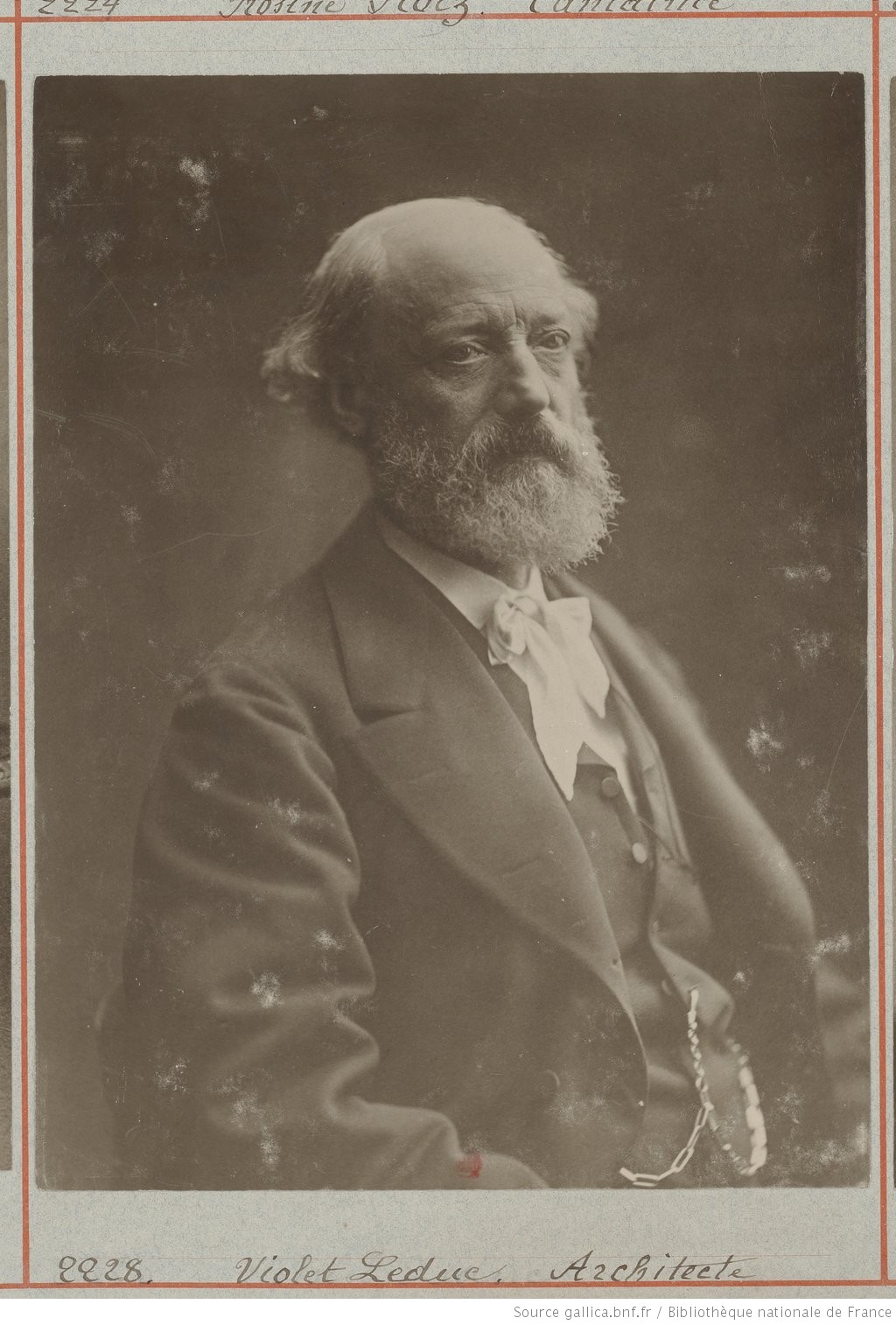
VIOLLET-LE-DUC Eugène (EN)
The collection
It is difficult to comment with precision on the objects owned by Viollet-le-Duc, of which there are no reproductions. Here, I will limit myself to recalling that I surprisingly discovered that Viollet-le-Duc had possessed Chinese and Japanese porcelain in the posthumous inventory of 17 rue Condorcet, of October 13, 1879 (Étude LVIII/930, maitre Cocteau).
The posthumous inventory of the furniture from rue Condorcet mentions about 60 pieces of Chinese and Japanese porcelain on the floor housing the private apartment, dining room, and bedroom. On the floor containing the architect's office,there is the description of a large cloisonné enamelled Chinese vase, including a carved wooden lid with a jade knob, valued at 250 Francs, and 20 curiosités of China (in these terms). “Curiosities” was the word used for the pieces brought by the Army to the Emperor, which were exhibited at the Pavillon de Marsan in February 1861 before being placed on the ground floor of the Château de Fontainebleau (Verlet-Samoyault C. and J-P., 1994). At the 1867 Exhibition in Paris, awards had been bestowed upon Raingo and Vialatte for ornamental pieces: the posthumous inventory mentions a Raingo clock (estimated at 150 Francs) and a copper and bronze marquetry clock accompanied by two Japanese porcelain cones estimated at 700 Francs.The competence of Viollet-le-Duc with regard to the curiosities of China seems to have been recognised. Indeed, after the fall of the Empire, when the Empress claimed ownership of a number of the pieces exhibited at Fontainebleau, Viollet-le-Duc was commissioned to write the response: he came out in favour of maintaining the different pieces requested from the Musée des Armées and the Musée Chinois, considering that they had been given to the Empress by the representatives of the Army and not to the private individuals. He corresponded on this subject with the deputy Claude-Anthime Corbon (1808-1891), member of the commission of the Assemblée constituée, and spoke out against the argument put forward by the archaeologist Charles-Ernest Beulé (1826-1874) (a specialist in antiquity) who claimed that Chinese and Japanese works, being only curiosities, could be treated as private property. Viollet-le-Duc retorted that, in this case, it would be the same for the Etruscan vases, the antique bronzes, and the entire Sauvageot museum. This provides an interesting observation on the status of works that do not belonging to classical antiquity (also reflected in his work, Histoire de l’habitation humaine, Hetzel, 1874).
The catalogue of the architect's library also provides valuable insight on his "Far Eastern" curiosities. It was written by Labitte, rue de Lille, in 1880, and the sale took place in 12 instalments (auctioneer Charles Pillet, assisted by Monsieur Barizel). 60 books deal with Chinese and Japanese arts and texts. Of particular note is the book by Stanislas Julien, linguist, with practical exercises in Chinese syntax and lexicography. Stanislas Julien had in 1856 translated a work entitled Histoire et fabrication de la porcelaine chinoise, with notes by Alphonse Salvétat (1820-1882) (Julien, S., 1856). Viollet-le-Duc wrote to Francisque Sarcey (1827-1899): "I have never been to China, but I have a rather fine collection of Chinese books, the oldest of which date from the beginning of the 16th century.”In the sales catalogue, however, the oldest books date from the beginning of the 17th century. There are works on minerals, mountains, plants, the landscape, drawings on fans, and an album of reproductions of drawings by Hokusai, as well as Le Miroir des antiquités conservées dans les salles du Musée impérial de Pékin, published by order of Emperor Khien Loung with a preface, in 1749. Stanislas Julien had also translated and summarised the main Chinese treatises on the cultivation of mulberry trees and the cultivation of silkworms, in 1837. This work was also part of Viollet-le-Duc’s library.
The third aspect of Viollet-le-Duc's interest in the civilisations of China and Japan was the weight given to drawing in l’Histoire d’une maison, in which the drawings on vegetable paper should be highlighted, and inl’Histoire d’un dessinateur, in which Yoshio Abe has identifiedcertain extracts from Hokusai's Manga (Actes du colloque international Viollet-le-Duc, Paris, 1980, Nouvelles éditions latines 1982). The architect praised “the true and thoughtful love of Japanese draughtsmen, seeming to see only the whole and to render in a few strokes of the brush the appearance of a site”; “See how these artists have managed to capture the gesture, the pantomime, and how all these characters stand on their own and do not pose for the gallery; what sincerity and spirit there is in these attitudes. How alive it all is!"

Related articles
Collection / collection d'une personne

Personne / personne

